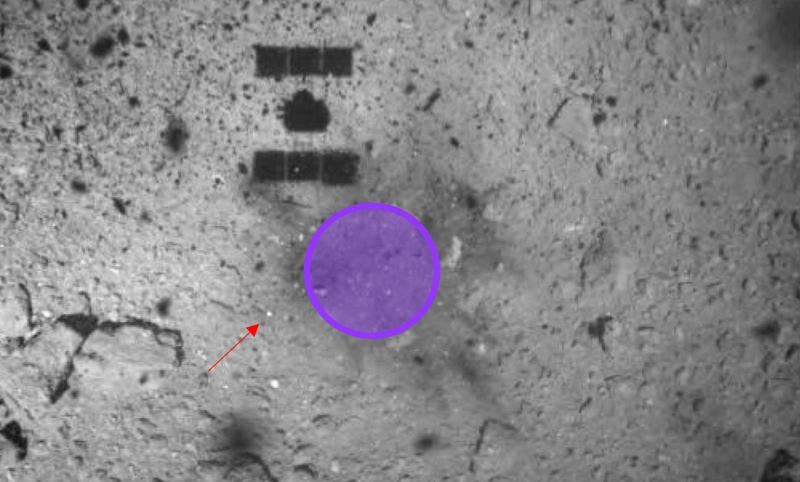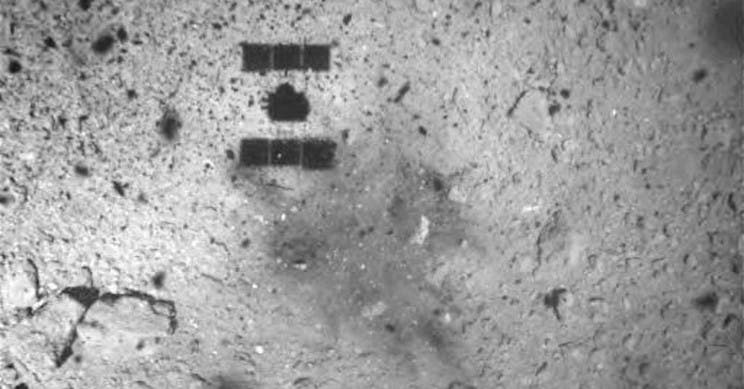This week, Japan made space history after one of its spacecraft landed on the surface of the asteroid Ryugu. The small spacecraft collected some dust samples, and then quickly ejected off the asteroid, remaining in its orbit. The whole mission took less than a minute, but in the aftermath, the Hayabusa2 spacecraft had time to take an unusual selfie.
In September 2018, Hayabusa2 launched two rovers to the surface of Ryugu. The one-kilogram rovers are equipped with wide-angle and stereo cameras — which beamed back the first photos from the asteroid’s surface — and are powered by internal rotors, which propel the robots across the asteroid. On February 22, the spacecraft itself landed on the asteroid, where it quickly fired a tantalum bullet at a 300 meters per second into the surface. The procedure was meant to kick up dust into Hayabusa2’s collecting tray.
The spacecraft then jumped off the one-kilometer-wide asteroid surface, but in doing so it also captured a photo of its shadow. In the image, which was just recently released by the Japanese space agency (JAXA), you can even see dark marks on the surface, showing where the spacecraft initially landed about 3.2 billion kilometers from Earth. At the moment the photo was taken, the probe was about 25 meters (82 feet) above the sample site
“The color of the region beneath the spacecraft’s shadow differs from the surroundings and has been discolored by the touchdown,” a JAXA spokesperson said in a press release. “At the moment, the reason for the discoloration is unknown but it may be due to the grit that was blown upwards by the spacecraft thrusters or bullet (projectile).”

The purple circle shows the landing site of Hayabusa 2, while the white dot is a bright marker placed on the surface of the asteroid to help guide the spacecraft. Credit: JAXA.
JAXA also released an image featuring the landing site prior to touchdown. While it’s not clear what caused the discoloration, this image clearly shows no odd features, which can only mean that the probe’s activities are responsible for dark spots.
Anyway, Hayabusa2’s work is far from finished. By June, the probe will make another landing on the asteroid — and this time it will try to extract subsurface material by dropping a small explosive device. In December, another similar mission will take place. Finally, in 2020, Hayabusa2 will embark on its long journey back to Earth to return the hard-earned samples it collected over the course of its lifetime. The samples will help scientists answer fundamental questions about the formation of the solar system. They might also inform the space mining industry with regard to the economic potential for similar asteroids.











